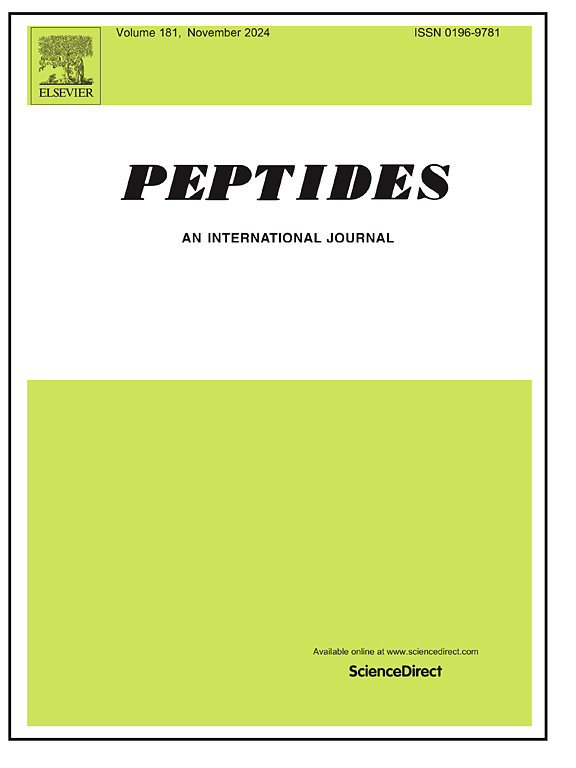Plasma angiotensinogen is associated with higher 24-hour ambulatory blood pressure independently of plasma angiotensin II in obese men
IF 2.9
4区 医学
Q3 BIOCHEMISTRY & MOLECULAR BIOLOGY
引用次数: 0
Abstract
The introduction of liver-targeted antisense oligonucleotides and small interfering ribonucleic acids that inhibit hepatic angiotensinogen synthesis has led to renewed interest in the role of angiotensinogen in hypertension. Therefore, we decided to do further angiotensinogen analyses in a hypertension research program, where we found that obese hypertensive men, given their high salt intake and high 24-hour ambulatory blood pressure (ABP), had higher than expected renin-angiotensin-system (RAS) activity. In a cross-sectional study, we examined 64 newly diagnosed treatment-naïve obese hypertension men (body mass index (BMI) ≥ 30 kg/m2, 24-hour systolic ABP ≥ 130 mm Hg and/or 24-hour diastolic ABP ≥ 80 mm Hg), and 40 obese normotensive men (BMI ≥30 mg/m2, 24-hour systolic ABP <130 and 24-hour diastolic ABP <80 mm Hg). Blood for biochemical evaluation of the RAS was drawn after 60 minutes rest in the supine position. We applied multiple linear regression analysis to explore independent associations. The obese hypertensive men had a higher mean fasting plasma concentration of angiotensinogen than the obese normotensive men (970.4 ± 214.3 nmol/L versus 868.4 ± 173.0 nmol/L, P = 0.013). Adjusted for age and angiotensin II, angiotensinogen was significantly associated with 24-hour systolic ABP (regression coefficient±standard error (mm Hg/100 nmol/L angiotensinogen): 1.8 ± 0.6, P = 0.006), 24-hour diastolic ABP (0.8 ± 0.3, P = 0.021), and 24-hour pulse pressure (1.0 ± 0.4, P = 0.028). Thus, plasma angiotensinogen was associated with higher 24-hour ABPs independently of plasma angiotensin II in obese men. However, further studies are warranted to determine whether angiotensinogen is only a risk marker of high BP or has BP raising effects independent of angiotensin II.
血浆血管紧张素原与肥胖男性较高的24小时动态血压相关,与血浆血管紧张素II无关。
肝靶向反义寡核苷酸和小干扰核糖核酸的引入抑制肝血管紧张素原合成,导致血管紧张素原在高血压中的作用重新引起兴趣。因此,我们决定在高血压研究项目中做进一步的血管紧张素原分析,我们发现肥胖高血压男性,由于他们的高盐摄入量和高24小时动态血压(ABP),有高于预期的肾素-血管紧张素系统(RAS)活性。在一项横断面研究中,我们检查了64名新诊断的treatment-naïve肥胖高血压男性(体重指数(BMI)≥30kg/m2, 24小时收缩期ABP≥130mm Hg和/或24小时舒张期ABP≥80mm Hg)和40名肥胖正常男性(BMI≥30mg/m2, 24小时收缩期ABP)
本文章由计算机程序翻译,如有差异,请以英文原文为准。
求助全文
约1分钟内获得全文
求助全文
来源期刊

Peptides
医学-生化与分子生物学
CiteScore
6.40
自引率
6.70%
发文量
130
审稿时长
28 days
期刊介绍:
Peptides is an international journal presenting original contributions on the biochemistry, physiology and pharmacology of biological active peptides, as well as their functions that relate to gastroenterology, endocrinology, and behavioral effects.
Peptides emphasizes all aspects of high profile peptide research in mammals and non-mammalian vertebrates. Special consideration can be given to plants and invertebrates. Submission of articles with clinical relevance is particularly encouraged.
 求助内容:
求助内容: 应助结果提醒方式:
应助结果提醒方式:


